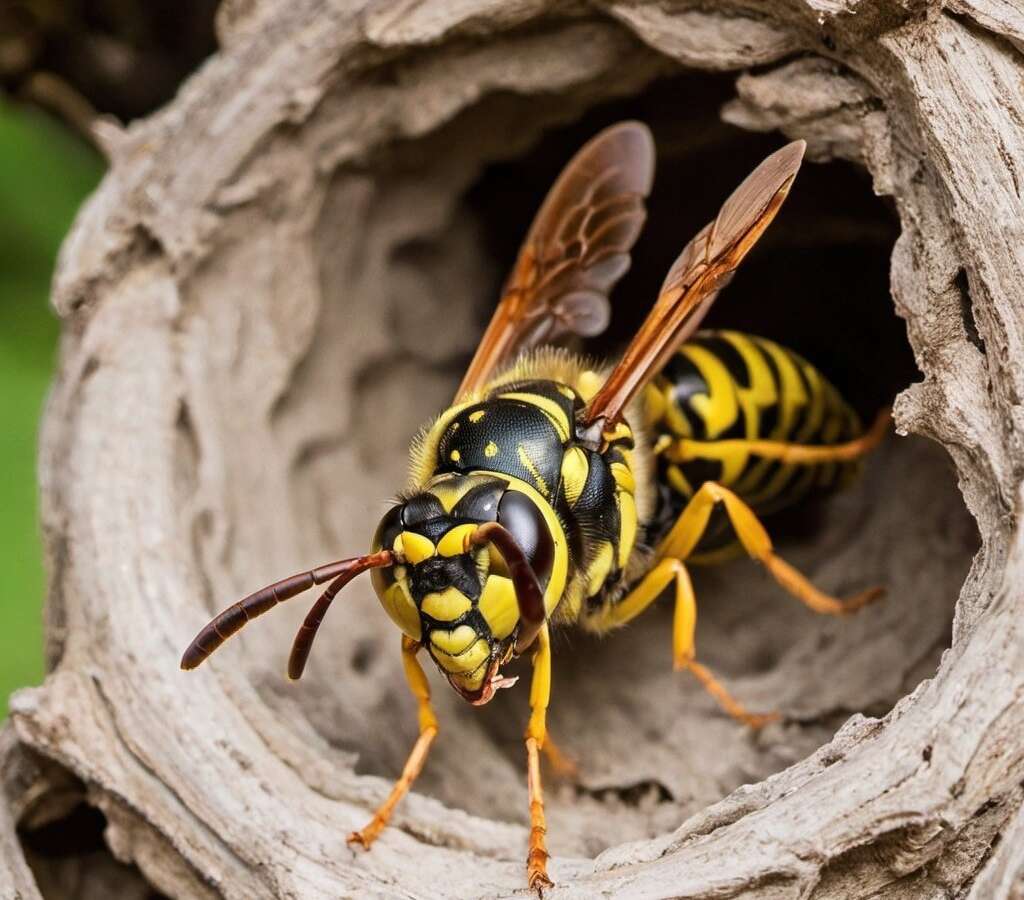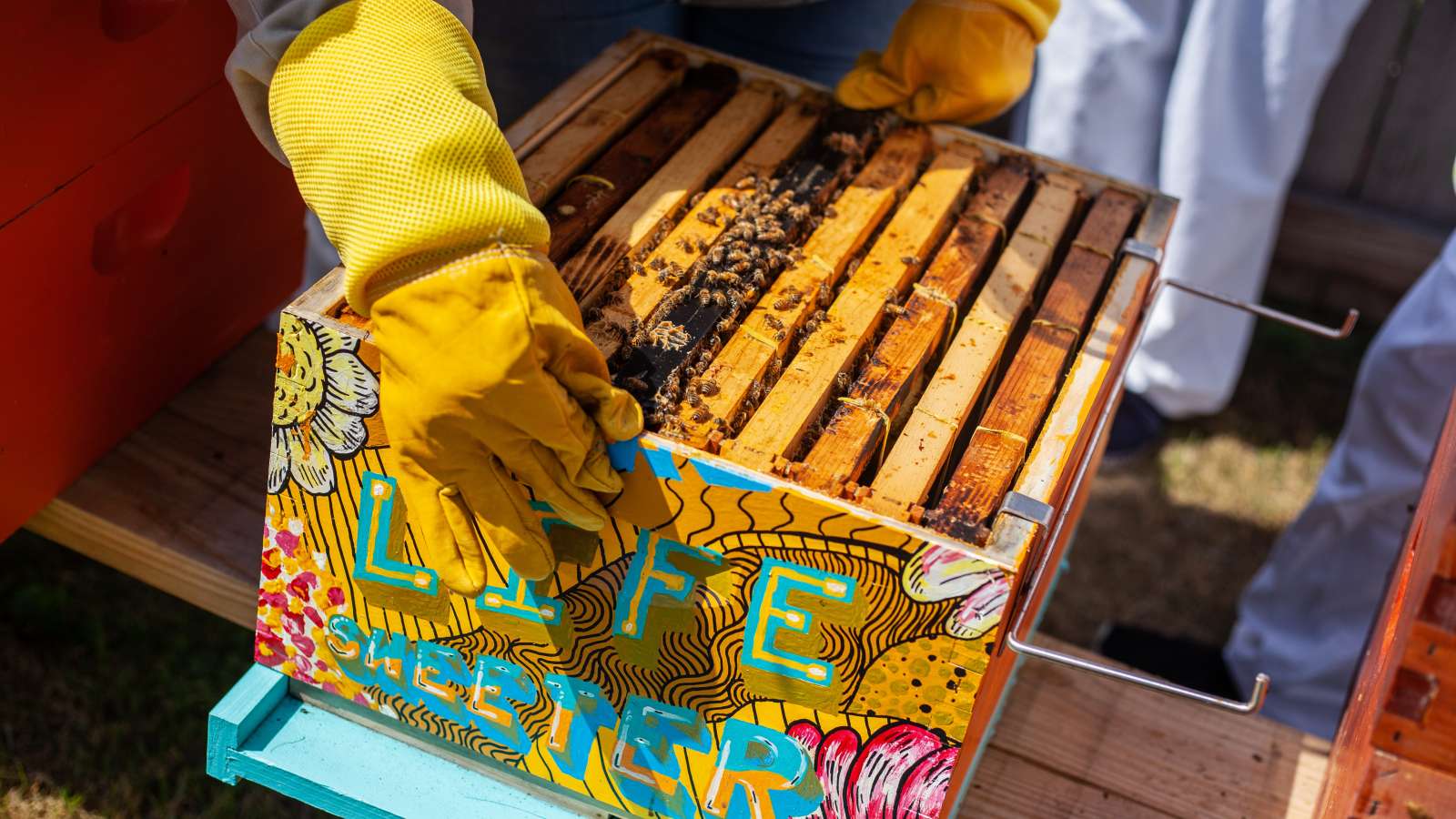In the summer months, wasps are a constant source of difficulty for many of my customers. It’s the time of the year that they are in full swing and can be seen. While they certainly are necessary for our ecosystem, they can be a huge nuisance if they decide to nest in the wrong place. It’s important that we make sure that these insects stay in the right places and not near our children or pets. In this article, let’s look at wasps, their lifecycle and what we can do to keep them away from our homes.
TWO CATEGORIES OF WASPS
Wasps are generally classified into two different categories. There are social wasps and solitary wasps. Social wasps are wasps that multiply in large numbers. A good example of a social wasp are paper wasps. These insects create a nest made of a paper like substance that has multiple cells with many different eggs in them. Each of the cells will produce one wasp, and once they hatch they’ll dry out on the wasp nest and then fly away. Call your Broken Arrow pest control company for more information.
Solitary wasps, on the other hand often reproduce in singles. A good example of a solitary wasp is the mud dauber. A mud dauber will take mud and create one single cell, will lay an egg in that cell and one wasp will be produced by the cell. While mud daubers are completely capable of creating more than one cell, these insects don’t actually work together once they hatch. Other solitary wasps include the potter wasp, the pipe organ wasp, and the golden digger wasp. Social wasps include the red paper wasp, hornets and Yellowjackets.
THE WASP STING
Wasps are generally known to most people buy their sting. Their stinger has a complicated mix of toxins that are used to both protect the wasp and to hunt for prey to feed to its young. Many people have an allergic reaction to a wasp sting. Because of this, it’s important that if you are stung by a wasp, that you seek medical attention immediately. While some people have very little to no response to a wasp sting. There are some that will have large allergic reactions including anaphylactic shock which can be life-threatening.
When a wasp stings, it can feel just like a bee sting, but the motivation is much different. Again the wasp has multiple toxins in its venom, while the bee predominately uses melanin in theirs. A bee doesn’t use their stinger to hunt. It is commonly known that honeybees have barbs in their stinger. Once a bee stings, it loses its stinger and many of the organs with it causing it to die. A wasp is not like this. It doesn’t have barbs on its stinger. It can sting multiple times if necessary. Your Tulsa exterminator will have more information for you.
NUTRITION REQUIREMENTS
While bees feed almost solely on the nectar of flowers, converting it into honey, wasps are a little different. The adult wasp will use its stinger to paralyze small spiders and other bugs and then carry their prey to its nest. It will create a cell, lay an egg in the cell that it creates and then insert a bunch of paralyzed insects for which the wasp larva can feed upon. Once that egg hatches larva will come out. It will feed upon these insects and grow to become an adult wasp. Once it was becomes an adult, it requires a lot more energy. Because of this wasps will feed on the nectar of flowers as adults in order to gain the energy necessary to lay eggs, build nests and forage and hunt for food.
Wasps live in many different habitats. Some wasps actually build their nests in the dirt. Often these wasps will bury eggs deep in the ground and allow their larva to feed an insects in the ground. Carpenter bees, on the other hand, will bore holes in wood to lay their eggs inside a wood beam or crossmember. They’ll cap off the hole until the young bee comes to complete adulthood and then it will emerge from the cell. Pipe organ wasps are named after the unique cells that they build. These are long, vertical cells that look much like the pipes of a pipe organ. Often they will layer them right next to each other creating that pipe organ look.
KINDS OF WASPS
Potter wasps get their name from their unique nests as well. They create a single cell that is round in appearance with a neck like opening. The opening will be sealed off until the young potter wasp will emerges from the cell, leaving a hole where the mouth of the pot should be. Paper wasps will chew on plant matter and then regurgitated it making the paper that’s necessary to create the nest that they have.
These wasps often find themselves on the awnings of buildings and in other areas that are nuisances. Garages are another place that can be places for these wasps to make their nest. While knocking the nest down is important, it’s important that we do this safely. That means you have to exterminate the other wasps in the nest before knocking it down. If you don’t a cloud of angry wasps will come out of that nest ready to sting anyone near that nest. Because of this it’s important that you contact your Broken Arrow exterminator for help when you have a wasp nest of this nature.
DEALING WITH WASPS
If you’re having issues with the bees or wasp or any other pests for that matter, it’s time to call in a professional Tulsa pest control company. Here at TermMax Pest Control, we’re the best in the business when it comes at dealing with all kinds of pests including bees and wasps. We service the greater Tulsa area including Coweta, Claremore, Broken Arrow, Sand Springs, Sapulpa, Prattville, Bixby, Jenks, Wagner, Owasso, Turley and much for. Call today for a free estimate. We’re here to help!



